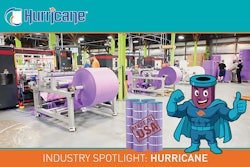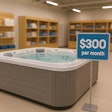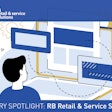
A new year has arrived on our doorstep, and with the turn of the calendar comes fresh hope. Will 2012 bring a more favorable retail environment?
Economists advise tempering optimism with prudence. Consumers, financial institutions, and state and city governments are still struggling to right their balance sheets. The resulting financial squeeze is putting a damper on shoppers — and that means retailers will likely encounter another challenging year.
“We are anticipating weak growth in 2012, with a gross domestic product (GDP) increase of some 2.7 percent,” says Sophia Koropeckyj, managing director of industry economics at Moody’s Analytics, a research firm based in West Chester, Pa. GDP represents economic activity, or the annual total of all goods and services produced in the United States.
At first glance a 2.7 percent rise in GDP might seem pretty good, given that the annual rate for an economy in average growth mode is 2.5 percent. Yet Moody’s number can be misleading because it is calculated off a poorly performing 2011 in which growth only stumbled forward at an estimated 1.6 percent. Says Koropeckyj: “Coming out of a recession, we usually hope for well above average growth as pent-up demand is released and as businesses ramp up production and hiring.”
Koropeckyj also cautions that her firm’s forecast could be too optimistic: “While we are still expecting a recovery in 2012, we now believe there is a 50-50 chance of lapsing into a double-dip recession during the first half of the year.”
As for the retail sector, Moody’s anticipates a slowing of growth. “In core retail sales we are looking at 4.5 percent growth in 2012 compared to just under 5.5 percent in 2011,” says Scott Hoyt, the organization’s senior director of consumer economics. While that represents a slowdown, Hoyt notes that the figure for 2011 is skewed upward because of the especially strong retail sales early that year. So 2012 may actually “feel” a little better as the year proceeds and the economy builds upward from the weak sales characteristic of late 2011 and early 2012. (To put the above figures in context, average annual core retail sales growth has been running at 4.6 percent in recent times. Core retail sales exclude the volatile revenues from auto sales and gas stations).
Consumers Hold Back
Moody’s forecasts reflect the uncertainty prevalent everywhere in the economic environment. Both players on the marketing seesaw are taking breathers: Consumers are waiting for a decline in the unemployment rate and a bottoming out of the housing market before returning to stores in appreciable numbers. And corporations are awaiting a rebound in consumer activity before bolstering workforces and investing in new property and equipment.
“Unemployment remains high and wage growth is very slow even for people who do have jobs,” points out Koropeckyj. “As a result consumer spending has not been as strong as it could be.”
And will the jobs picture improve? “The expected economic growth in 2012 is at a level which can absorb some unemployed people, but not too many,” says Koropeckyj. “So by the end of 2012 we are expecting the unemployment rate to be around 8.8 percent, not appreciably lower than the 9.1 percent level of late 2011.”
Any improvement in the jobs picture will depend largely on policy decisions at the federal level, according to Hoyt. “Under current law we will experience significant fiscal restraint next year, with the expiration of both the payroll tax holiday and extended unemployment benefits. Those are the two factors that most directly impact consumers.”
As for housing, consumers are wary of the continuing rounds of foreclosures and the high number of homes worth less than their mortgages. “Foreclosures and housing inventory remain quite high, maintaining downward pressure on home prices,” says Koropeckyj. “We do not anticipate house prices hitting bottom until the end of 2012.” The median price for existing home sales is expected to be $166,000 in 2012, about even with the $165,000 expected for 2011, which represented a decline from the $173,000 of 2010.
Housing starts are expected to reach 610,000 in 2011, up marginally from the 580,000 of 2010. The number may hit a little over one million in 2012. To put those numbers in perspective, housing starts were averaging 1.6 million annually before the current recession which began in 2008.
Perhaps the most powerful force affecting the economy is psychological: People believe they are at the end of an era in which they could view their homes as sources of equity and as assets that would continually increase in value.
Together, the moribund state of housing and unemployment weigh heavily on consumers. “The current state of consumer confidence is consistent with a severe recession,” says Hoyt. “Consumers are very negative about the economic outlook.”
Business Sits It Out
Until consumers come out of their funk, corporations will be in no hurry to hire and expand. They are also being restrained by uncertainty about federal initiatives in areas such as the tax code, health care and financial reform, environmental and energy policy, foreign trade, and even the forthcoming presidential election.
“Given that frame of mind, it should be no surprise that no one is investing in new capital goods, or hiring,” says Michael Smeltzer, director of the Manufacturers Association of South Central Pennsylvania, a trade group whose one thousand members employ some 200,000 workers.
The fact is that most large and medium-sized businesses would rather accumulate cash than launch initiatives that might not pay off in a wobbly marketplace.
“What Roosevelt said about ‘the only thing to fear is fear itself’ may have something to it,” says Walter Simson, principal of Chatham, N.J., -based Ventor Consulting. “The fear in the business environment is palpable. People do not want to take dramatic action. They are afraid of a sudden drop in demand for unanticipated reasons, as happened in 2008.”
And there is enough anecdotal evidence about demand being choppy, adds Simson, that business owners are not thinking about what they should do to improve their operations. As a result, Moody’s expects spending on new plant and equipment to increase by 7.06 percent in 2012, down from the 9.61 percent of the previous year.
Hesitation to expand comes at a time, paradoxically, when credit for medium and large businesses is more readily available than a year ago. “Business credit is much like consumer credit,” says Hoyt. “Well qualified borrowers now have improved access.”
Smaller businesses, however, face continuing hurdles. “Our small businesses are continuing to find it difficult to find reasonable capital,” says Smeltzer. “And that’s where the jobs are created; that’s where the new ideas and the entrepreneurs start.”
Corporate profits will also experience headwind: Moody’s expects them to grow by some 3.2 percent in 2012, down from the previous year’s 3.8 percent, which was itself a decline from a robust 2010. The de-escalation, says Koropeckyj, is due to a number of factors, including higher operating costs and lower productivity growth.
What productivity increase does occur is being maintained through restrained hiring and additional labor-saving machines. “Companies have found all sorts of ways to improve the way they operate with lean staffing,” says Koropeckyj. “These process enhancements will remain in place, and will in fact prevent employment from rebounding to where it was prior to the recession for many businesses, even when output does rebound.”
Labor Mismatch
Deciding to hire more people is one thing; finding the right people is another. And in this area the labor market will present a growing challenge to both consumers and businesses. “We are beginning to be concerned about what may be a chronic labor shortage,” says Smeltzer. “The workforce is getting older, and our data tell us that as many as five percent of our employees could retire every year. That’s 10,000 people (out of 200,000 employees in the organization’s member companies) with a high-quality work ethic and legitimate skills.”
And who will replace them? Despite high unemployment figures, business owners are having trouble finding the workers they need. “Young people are not being trained in these skills, and a lot of the unemployed do not have the skills our businesses are looking for,” says Smeltzer. “They are not inclined to go back to school to learn the skills. They just want jobs, and the ones they qualify for are lower quality than what they were used to.”
“For decades we could just put a sign in yard for a machinist and get 20 qualified people,” says Smeltzer. “Maybe today you get 100 applicants but none are qualified.” While employers are seeing an increase in apprenticeship programs, they are concerned about the future. “The labor mismatch is not yet a crisis but it is approaching one.”
Poised for a rebound
Despite the prevalent gloom and doom, the news isn’t all bad. “Households have been deleveraging, so their balance sheets are in much better shape,” says Koropeckyj. “Mortgage rates are quite low and banks are more willing to make consumer loans. There are more credit card originations and there is also a lot of pent-up demand.” Indeed, Moody’s expects a gradual loosening of credit standards to continue through 2012.
For their part, corporations are accumulating a huge reserve of ready cash that can be quickly invested in growth when the game of chicken with consumers is finally over.
In the meantime, retailers and other small business owners are taking a “wait and see” attitude about the future. Until certainty returns to the marketplace business owners will be wringing more revenues out of current operations, trimming operational expenses and putting expensive expansion initiatives on hold.
“Sometimes retailers believe that if they want to grow they have to venture into new areas,” says Simson. “That is not necessarily true. Every retailer has core merchandise and customers. My advice is to identify your core customers and get closer to them: It is more profitable to cater to them than to try to expand into new areas.”
Build on what you have, growing your sales with existing customers. Maybe that’s a dull strategy, but it might be the wisest course until the economic headwinds subside. “We are in for another year of ‘not a lot of excitement’ from the viewpoint of the economy,” concludes Smeltzer. “There is a lot of uncertainty, and the human reaction to uncertainty is to do nothing.”












































